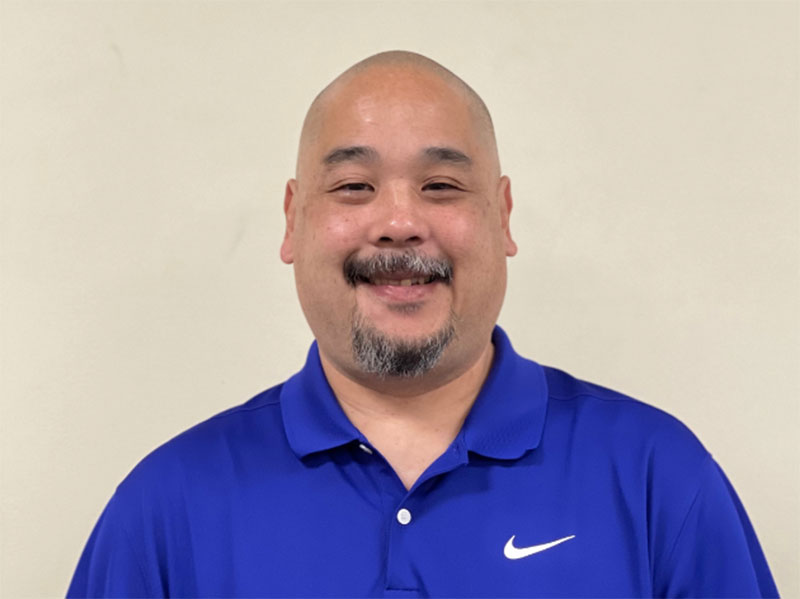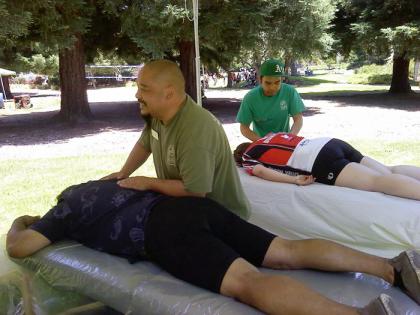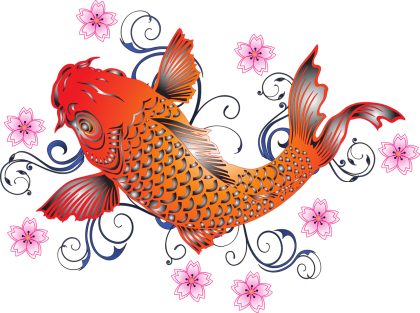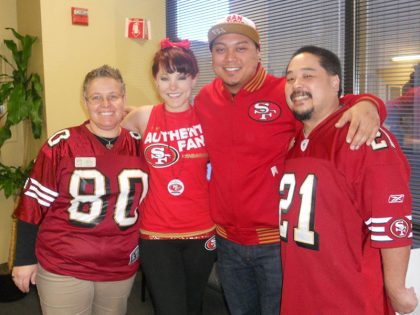Staff Spotlight | NHI’s Phil Okazaki Reflects on His Japanese American Heritage and its Impact on His Life

Phil Okazaki, Certified Massage Therapist CAMTC #75851, Current AMTA California Chapter President, Senior Advanced Neuromuscular Therapy Program Instructor and ANMT Curriculum & Marketing Specialist
As we celebrate Asian American and Pacific Islander (AAPI) Heritage Month, we spotlight Phil Okazaki. Phil is an alumnus of NHI who currently serves as the AMTA California Chapter President and works for NHI as a Senior Advanced Neuromuscular Therapy (ANMT) Program Instructor and ANMT Curriculum & Marketing Specialist. In addition to all of that, Phil is a Certified Massage Therapist CAMTC #75851.
Phil shares his thoughts on how his Japanese American heritage and cultural beliefs impact every facet of his life.
My Upbringing Bridged Two Very Different Societies
My parents are Issei, meaning they immigrated from Japan to the United States, and I am of the first generation born in America. One would discern this would indicate strong ties to my heritage; unfortunately, this is not true. My upbringing bridged two very different societies and learning more about my Japanese heritage has created clarity regarding the dualities I experience.
I feel the most accessible ways to share this is through examples of cultural beliefs and how they have influenced the man I’ve become.
The State of Zan-Shin
Zan-Shin is used in multiple ways. The reference that is most applicable to me comes from a traditional tea ceremony. Upon the conclusion of the ceremony, the host will walk with their guest to see them safely on their journey and wait until the guest is no longer visible. Upon returning to the tearoom, the host will not rush and clean the space.

Post event sports massage is a great way to build community
Instead, they will pour one last cup of tea and sit quietly reflecting on the time spent reverently acknowledging the shared moments for those exact moments will never occur again.
In another sense, Zan-Shin refers to extending beautiful “shosa” (beautiful posture and poise) typically used in martial arts. When there is an opponent, it is vital to be modest, calm, and fair; there is also a deep sense of gratitude to have an opponent with whom to compete. Within this gratitude is the layer of understanding oneself, resetting oneself, improving techniques, and being present.
This philosophy is engrained in my practice and work in many ways. There is the quiet time I spend after a client departs, a moment to reflect on the session and the aspects that went well and where improvements can be made; and the gratitude for any person to have trust in my knowledge and skill to render a session that is supportive of their rehabilitation and performance goals.
The Culture of Wa
Within each of our patients there is turmoil. This can manifest biologically within injured or dysfunctional tissue, psychologically within their mental state and ability to meet life’s challenges rationally and objectively, and socially through the support or isolation from the world around them. We often talk about Massage Therapy as a way to restore homeostasis, or balance. This can also be considered harmony.

Koi symbolize strength, courage, patience, and success through perseverance. Cherry Blossoms (sakura) symbolize the fleeting nature of life, fresh starts/renewal, and the coming together in friendship
The Japanese have a culture of harmony, or Wa. There is a calm, peaceful unity within a social group. The avoidance of conflict is a key component because the needs of the many outweigh the needs of the few or the one. Our bodies require that harmony to function optimally. As a Therapist and an employee, I work hard to maintain that harmony, avoiding conflict and dissonance to ensure we are all moving in the same direction which includes success for all.
The Culture of Wa is challenging when straddling Western and Eastern mindsets. I feel this has posed some of the greatest challenges in my life and why I have often felt that I didn’t quite fit. I’ve adapted my behaviors to protect myself and put myself first; this is inherently unnatural and feels selfish because it doesn’t matter what I do for me if the “we” isn’t successful. This is one aspect that may have drawn me to Massage Therapy.
The feeling of being of support and service to another individual, helping them to become their best, not only balances the cultural divides I often feel, it also feeds my soul. In my heart, this is the way we are meant to function; this is how we learn; this is how we can achieve anything; together, celebrating our differences, embracing each other’s strengths, acknowledging our challenges, and putting us all in the position in which we can become the greatest versions of ourselves. It may sound idealistic and unattainable; nothing is impossible if we give each other the space and support to achieve.
The Concepts of Uchi and Soto
Having a space and environment which supports our achievement requires a community; the concepts of Uchi and Soto. Uchi indicates “inside,” and Soto would be “outside.” We all face some group dynamic distinctions. My friends and family are uchi; as are my colleagues. When I contrast the groups, context becomes important. Because I behave more casually with my family and friends, they are uchi compared to the work face I put on with my colleagues and they become soto. When I’m with my colleagues they can become my uchi when compared to students which are soto.

Part of my 9er fan family w/Julie, Shannon, and Phil…yes, he’s Phil too which makes him cool.
There are ways we speak to each other based on these levels of intimacy or inclusion. Within these overlapping groups, my behavior changes based on context. In a completely different aspect, applying the concepts of uchi and soto to my upbringing becomes incredibly difficult. While on the exterior I can easily be identified as Asian, as Japanese. My behaviors though will definitely be classified as Western, or American.
The challenge has always come when trying to learn more about my culture. I’ve wanted to learn to speak Japanese; I was fluent as a child. When I enrolled in Japanese 101 in college; the glances and judgement that were thrown my way were intense.
There was a clear misunderstanding that I didn’t have an edge; I wasn’t there to pad my GPA; and I wasn’t accepted within a non-Japanese speaking group. When I’m in Japanese speaking groups and I don’t understand fully what is being said, there is also judgement and discrimination, especially when I’m outed as Nisei. How dare I not have a better understanding of our language? The shame this brings is intense and magnifies the feeling that I do not truly belong to either America or Japan.
The Japanese Haji
Speaking of shame…Japanese shame culture or Haji has been carried forward since the Samurai period. Shame is an external feeling; one that is thrust upon you for not living up to the expectation or performing above standard. The knowledge that my actions reflect not just on me, but my family, and I’ve extended it to my industry, my profession, my employer, and all with whom I associate. That creates an immense pressure to work diligently to be the best and prove myself worthy. It would be incomprehensible for me to perform in a way that brings shame into my world.
I often find myself self-censoring to avoid expressing my truest thoughts and opinions because of the way they may affect those that I represent beyond myself. In my experience, combining the Japanese Haji with Western guilt has created an entirely different monster. Now, the internal feelings of guilt for doing wrong couple with the external shame the pressure on doing right, performing exceptionally, and representing all of my associates can easily become overwhelming and burdensome.
For those who know me well, this manifests in the discomfort with attention because then people are watching and it’s harder to maintain appropriate behavior all the time. Praise does not belong to me; but to all who contributed to my growth; however blame sits squarely on my shoulders because I should have known better.
Reflecting on Japanese Culture and Heritage
Reflecting on Japanese culture and heritage; there are many rules to behavior. While they may seem tedious, I feel they bring a sense of mutual respect and social equity. It’s easy to see why Asians can be seen as a model minority; because we’re taught not to rock the boat. We take what is given and express gratitude. Recently, I’ve been thinking a lot about the worth of words versus action. We can say just about anything we want; does it truly mean anything?
Putting forth the effort to do something takes more focus and energy which automatically gives it more meaning. Let’s be honest, Japan is still the only Nation in the world to experience the horrors of nuclear attacks. I remember vividly one of my trips to Japan where I visited the Hiroshima Peace Memorial Museum. I was shaken to my core experiencing the exhibits and getting a fraction of the sense of fear and destruction.
Walking out into modern Hiroshima, I thought to myself, how were they able to recover and build this society? How did they literally rise from ashes to become a global powerhouse? And now, I’m left wondering, based on the few concepts shared here; how much of a role did they play? How much could we achieve if we embraced our Wa and found a place for Zan-Shin in our experiences?
Learn more about the Advanced Neuromuscular Therapy Program, in which Phil teaches as a Senior Instructor, today. Complete this form to connect with an Admissions Representative.